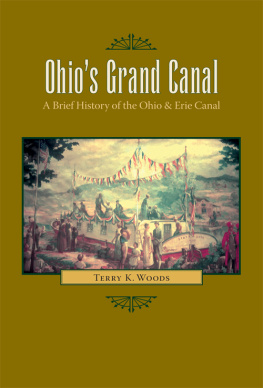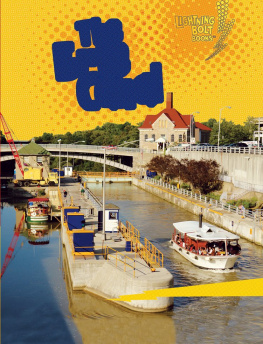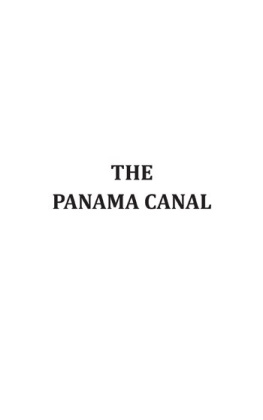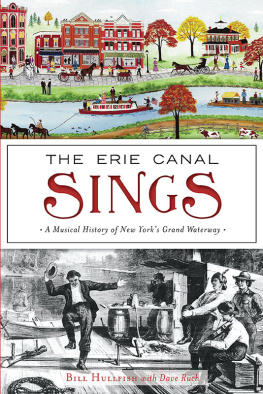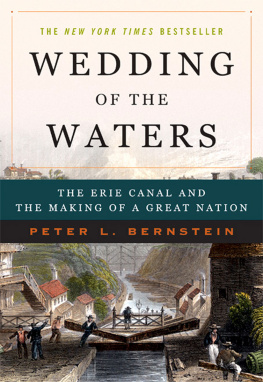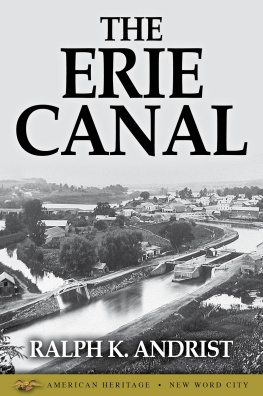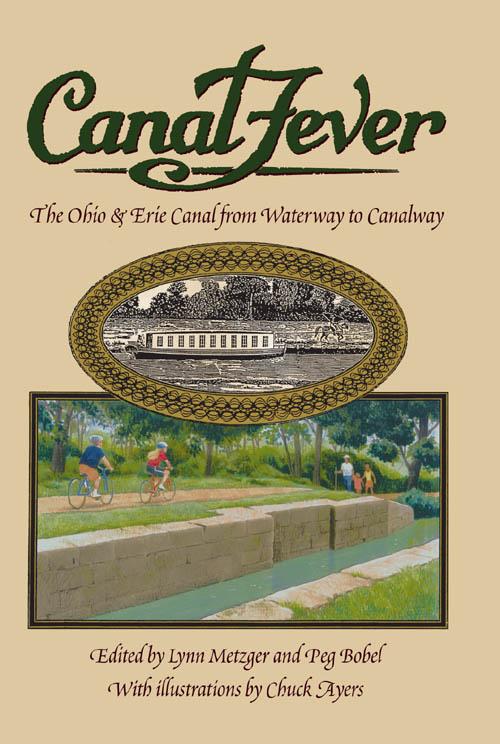Canal Fever
The Ohio & Erie Canal,
from Waterway to Canalway
Canal Fever
Edited by Lynn Metzger and Peg Bobel,
with illustrations by Chuck Ayers
Kent State University Press Kent, Ohio

Frontis: Ohios canals, connected by Lake Erie to New Yorks Erie Canal, became a transportation system that opened Ohio for settlers and commerce. (Drawing by Chuck Ayers.)
2009 by The Kent State University Press, Kent, Ohio 44242
ALL RIGHTS RESERVED
Library of Congress Catalog Card Number 2008051859
ISBN 978-1-60635-013-3
Manufactured in the United States of America
LIBRARY OF CONGRESS CATALOGING-IN-PUBLICATION DATA
Canal fever : the Ohio & Erie Canal, from waterway to canalway / edited by Lynn Metzger and Peg Bobel, with illustrations by Chuck Ayers.
p. cm.
Includes index.
ISBN 978-1-60635-013-3 (hardcover : alk. paper)
1. Ohio and Erie Canal (Ohio)History. I. Metzger, Lynn. II. Bobel, Peg.
HE 396.o33c36 2009
386'4809771dc22 | 2880051859 |
British Library Cataloging-in-Publication data are available.
13 12 11 10 09 5 4 3 2 1
Contents
PEG BOBEL AND LYNN METZGER
SAM TAMBURRO
GLENN HARPER
JACK GIECK
GEORGE KNEPPER
JOSEPH T. HANNIBAL
JOSEPH T. HANNIBAL, SABINA F. THOMAS, AND MICHAEL G. NOLL
KATHLEEN FERNANDEZ
PEG BOBEL AND LYNN METZGER
RICHARD SICHA
H. ROGER GRANT
ROBERT W. BOBEL
SAM TAMBURRO
GLENN HARPER
PEG BOBEL
PEG BOBEL
PEG BOBEL AND LYNN METZGER
SAM TAMBURRO
BOB DOWNING AND RUSS MUSARRA
RUSS MUSARRA
LYNN METZGER
PEG BOBEL AND LYNN METZGER
PEG BOBEL AND LYNN METZGER
RORY ROBINSON
DANIEL M. RICE
PEG BOBEL AND LYNN METZGER
Preface and Acknowledgments
There have been three canal fevers in northeast Ohio. First came the excitement generated by the building and opening of the Ohio & Erie Canal, beginning in 1825; second was the frequent occurrence of the disease labeled canal fever that afflicted canal builders and their families; and the third, still rampant, is completely good for ones health. Fueled by the many potential benefits of preserving the canals, many grassroots organizations and public and private entities have had the fever since the mid-1980s. The result of this latest fever was the creation of the Ohio & Erie Canal National Heritage Corridor in 1996. Now called the Ohio & Erie Canalway, it is a designated linear swath of land extending 110 miles from Cleveland to New Philadelphia. The Canalway features the historic canal and its signature Towpath Trail and provides recreation, education, historic preservation, natural resource protection, and economic development in the region.
This canal fever, in book form, takes the reader on a journey through 185 years on those 110 miles. It is a journey from the time the Ohio & Erie Canal was built, through years of operation, floods, and ultimate demise as a transportation system; then through the era of disuse and abuse; and into the canals current renaissance as a recreational, educational, and economic resource for northeast Ohio. The chapters, all written specifically for this book, use original sources, interviews, and old stories to connect the canals past life to its present one.
We hope people in the communities within and surrounding the Ohio & Erie Canalway will enjoy a case of canal fever and the book will be a resource for all those interested in the story of the Canalway to explain what a canal is, why it was built, and how we now have this Towpath Trail. Of course the best medicine for canal fever is to get out on that trail and visit the Canalway.
The discussions leading to this book began in 1998, between historian Sam Tamburro and anthropologist Lynn Metzger researching the canal in the Village of Clinton. Their conversations, concepts, and research led to deciding the topics, recruiting the contributing authors, and convincing Peg Bobel to coedit the manuscript. A grant from the Ohio & Erie Canal Association supported the prepublication work.
We would still be moving at the canal-boat rate of four miles an hour, were it not for the help and support of family, colleagues, and friends. We are deeply grateful for all the individuals who gave their time and talent to help bring this book to life. We are especially grateful to Sam Tamburro, whose vision helped to form the contents of the book and who contributed so much. We also shared this journey with friend and totally committed canal buff illustrator Chuck Ayers, who not only selected and organized the images for the book, but he contributed his research skills as well. The other contributing authors have brought additional expertise, depth, and variety to the book. We wish to thank George Knepper, Jack Gieck, Joe Hannibal, Sabina Thomas, Michael Noll, Kathy Fernandez, Rick Sicha, Roger Grant, Rob Bobel, Glenn Harper, Bob Downing, Russ Musarra, Rory Robinson, and Dan Rice for their contributions. We are also grateful to all the individuals listed in the appendix who allowed us to interview them about their roles in developing the Canalway.
We wish to thank the Kent State University Press editors Mary Young and Joanna Hildebrand Craig for their wise and supportive guidance and Erin Holman for sharp-eyed copyediting. Were it not for their help, the book would have been unliftable.
So many others have helped along the way. John Miller, retired University of Akron archivist, and Steve Paschen of the Kent State University Archives helped with both research and humor. We are immensely grateful to friend and mentor Delmus Williams, University of Akron Libraries, for his advice and good cheer. Others read parts of the manuscript for content and clarityespecially Linda Whitman, University of Akron archeologist; Sally Longville, retired Akron educator; and Mary Metzger Croft, reading specialist. And then there is Jim King, of Angel Falls Coffee Company who cheerfully checked on our progress as we used hours of table space. All authors need a friendly caf.
Of course we are grateful to the many family members and friends who had to listen to us talk about this project for years. The deepest thanks, however, go to our spouses, Rob Bobel and Ed Metzger. They helped with field trips, research, and information gathering; debated fine points of content; and provided food and spirits when most needed. Most of all, they sustained their own and bolstered our senses of humor. It has been a huge advantage to us and this book that they both also have severe and unrelenting cases of canal fever.
Part 1
The Historic Ohio & Erie Canal
Chapter 1
The History of the Ohio & Erie Canal
SAM TAMBURRO
In the twenty-first century, it is difficult to grasp the significance of the canal era to U.S. and Ohio history. The period seems far removed, even quaint in its complexities. However, the canal system that developed in the nineteenth century created a commercial network that revolutionized trade and travel in the United States. Nowhere are these connections more evident than the nexus between New Yorks Erie Canal and Ohios Ohio & Erie Canal.



